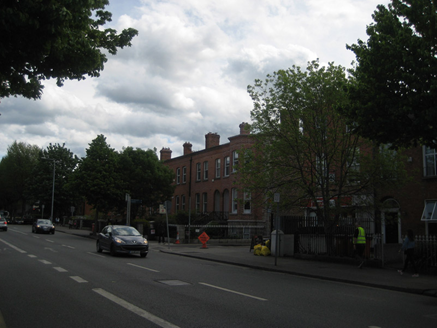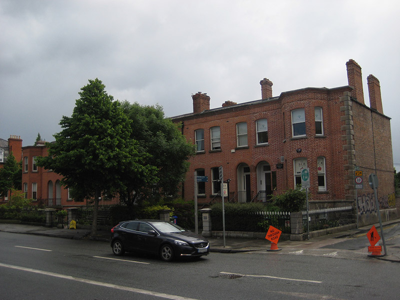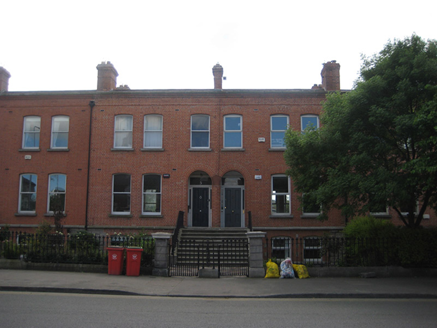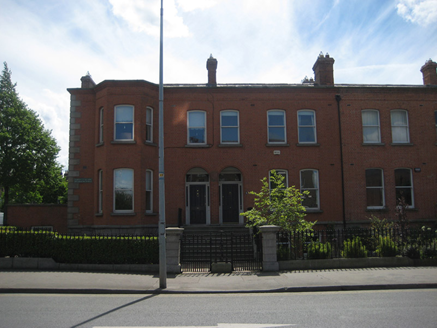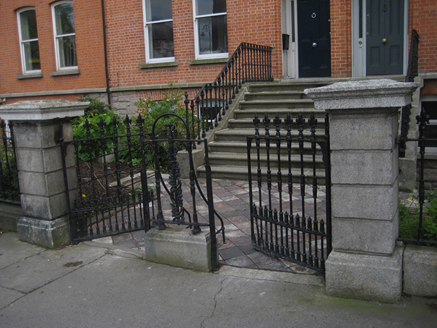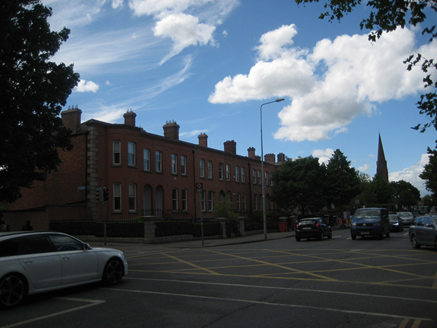Survey Data
Reg No
50110166
Rating
Regional
Categories of Special Interest
Architectural
Original Use
House
In Use As
House
Date
1855 - 1875
Coordinates
315385, 232706
Date Recorded
15/05/2017
Date Updated
--/--/--
Description
Terrace of six three-bay two-storey over basement houses, built c. 1865, having full-height canted-bays to east and west ends of front (north) elevation. Returns to rear (south) elevation. Hipped M-profile roofs, partially hidden behind red brick parapet having cut granite coping and carved brick eaves course. Red brick chimneystacks with clay pots. Red brick, laid in Flemish bond, to walls, having rendered quoins, cut granite plinth course above snecked rusticated granite to basement walls to end-of-terraces houses. Rendered plinth courses to east and west elevations. Segmental-headed window openings with cut granite sills and mixed one-over-one pane timber sliding sash and replacement windows. Round-headed openings to recessed porches, having moulded brick surrounds. Recessed square-headed door openings with sidelights and overlight, having early timber panelled doors. Cut granite steps with cast-iron boot-scrapes to platforms, flanked by wrought-iron handrails to cast-iron railings on granite plinth walls. Some polychrome tiled paths. Cast-iron gates with matching railing set on cut granite plinth wall, dressed granite piers having granite coping to boundary to front. Situated to south of road, between Stamer Street and Kingsland Park Avenue.
Appraisal
A unified composition that makes a grandiose addition on the street, due to its elevated entrances and canted end bays. The houses retain much of their historic form and character, enhanced by the features such as early doors and windows. The cast- and wrought-ironwork and encaustic tiles attest to the artisanship in mass-production in the late nineteenth century and contribute to the suburban character of the streetscape. The smooth machined brick popular in the latter half of the nineteenth century adds a pleasing neat quality to the front elevations. According to Casey (2005) 'Trustees for making a circular road were established by statute in 1763 in order to improve the principal city approaches and to reduce congestion'. This portion of road was not fully developed until a century later, when land became available following the closure of Portobello Gardens in 1865.
